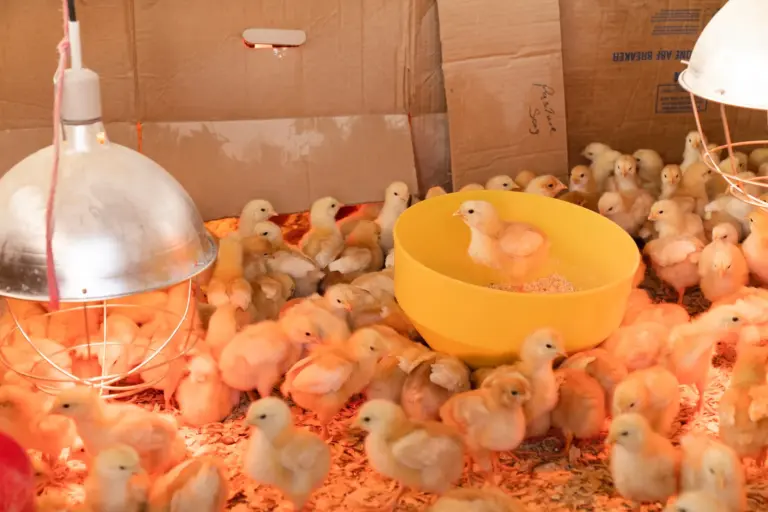Picture the endless Midwestern cornfields shimmering under the relentless mid-July sun. What looks like a peaceful, golden landscape hides a surprising atmospheric secret—one that’s quietly shaping the air we breathe.
These vast seas of corn, unassuming as they may seem, are sweating. Through a process known as evapotranspiration, corn plants draw water up from the soil and release it into the air through microscopic pores in their leaves. This isn’t just a small-scale effect—across thousands of acres, the moisture builds into a subtle atmospheric force.
So here’s the question: How could corn make heat waves worse?
What Is “Corn Sweat”?
The cornfields are literally sweating out moisture into the air. In reality, this phenomenon is far from magical—it’s simply nature doing what it does best: balancing heat through water.

What Is Evapotranspiration?
Evapotranspiration combines two processes:
- Transpiration—plants draw water up from the roots and releasing it as vapor through their leaf stomata, and
- Evaporation—water evaporating from bare soil into the air.
Together, these processes feed invisible moisture into the atmosphere, cooling the plant but raising humidity around it.
How Much Water Does Corn “Sweat”?
Cornfields are especially water-hungry: at peak early–mid summer, one acre of corn can release between 3,000 and 4,000 gallons of water into the air each day—and under ideal conditions, estimates rise as high as 5,000 to 8,000 gallons.
- Daily transpiration for a healthy corn field reaches around 4,000 gallons, approximated up to 8,000 gallons per acre per day in the Midwestern Corn Belt under dry air conditions.
- Cornfields regularly emit 3,000–4,000 gallons of water vapor daily—enough to meaningfully elevate local humidity.
Why “Corn Sweat”?
The phrase “corn sweat” serves as a vivid metaphor for this massive release of moisture. It captures how cornfields become like a living, breathing entity—sweating into the atmosphere and turning landscape into an active contributor to summer humidity.
Tracking the Invisible: The Role of MODIS
To understand how cornfields may intensify heat waves, researchers turned to an extraordinary set of eyes in the sky—NASA’s MODIS (Moderate Resolution Imaging Spectroradiometer). This pair of instruments aboard the Terra (launched 1999) and Aqua (2002) satellites views the entire Earth every 1 to 2 days, capturing data in 36 spectral bands, from visible light to thermal infrared.
What Can MODIS Detect?
- Vegetation health and growth (via NDVI/EVI)
- Land surface temperature and aerosols
- Crucially, column water vapor (precipitable water) using specialized near-infrared bands.
With spatial resolutions ranging from 250 m to 1 km, MODIS can observe regional-scale moisture changes—like those rising from vast cornfields.
How MODIS Helped Reveal Corn Sweat
In the study of the July 2011 heat wave, scientists used MODIS water vapor retrievals to detect anomalous moisture levels above the agricultural Corn Belt. By integrating these satellite-based moisture maps with weather model predictions, they could estimate the amount of moisture actually being released by cornfields through evapotranspiration.
This approach allowed them to map and quantify the extra moisture injected into the atmosphere—an essential step in understanding how cornfields could amplify heat waves.
MODIS transformed an invisible process into measurable data—showing us that even landscapes can breathe, and that cornfields may be quietly shaping the summer air we live in.
The 2011 Heat Wave Case Study
Setting the Scene
Five relentless days under the scorching Midwestern sun—July 16 through 20, 2011. The Corn Belt was gripped by an extreme heat wave, where temperatures soared and humidity hung thick. Amid these conditions, scientists asked a deceptively simple question: How much did corn sweat fuel this summer furnace?
Research Focus
The key objective: to quantify how much extra moisture from cornfield transpiration exacerbated the heat wave. In particular, researchers wanted to know whether dense agricultural landscapes were actively intensifying the heat otherwise felt.
Methodology Overview
To answer this, scientists merged satellite moisture data from MODIS with a high-resolution weather model, refining their estimates using a local ensemble-transform Kalman filter.
- Satellite observations captured water vapor levels above the Corn Belt.
- A mesoscale weather simulation (WRF) served as their prediction model.
- The Kalman filter algorithm then blended these observations with model forecasts, adjusting for bias, to deliver a corrected, more reliable estimate of transpiration flux. This process revealed that prior model estimates had overestimated crop-derived moisture by around 15%.
Together, this approach provided a rigorous framework to isolate and measure how much moisture cornfields were injecting into the air—and how that extra humidity transformed the experience of extreme heat.
What Is the Kalman Filter Technique?
A Simple Explanation
At its core, the Kalman filter is an algorithm designed to estimate hidden or uncertain variables by intelligently blending model predictions with real-world observations. It operates through two recurring steps:
- Prediction – the algorithm forecasts the current state (e.g., atmospheric moisture) using a mathematical model, including estimated uncertainties.
- Update – When actual observations arrive (such as satellite water vapor data), the algorithm adjusts the forecast by weighing the reliability of each source. This updated estimate then becomes the starting point for the next cycle.
This process is particularly useful in systems where measurements are noisy, incomplete, or indirect—exactly the challenge when estimating moisture flux from vast cornfields.
Application in the 2011 Heat Wave Study
In the case of the July 2011 heat wave, scientists used a local ensemble-transform Kalman filter to merge MODIS-derived moisture readings with weather forecasts. This data-assimilation approach pinpointed how much water vapor cornfields contributed to the atmosphere—correcting prior model estimates by about 15% and significantly improving the precision of moisture flux estimates.
Major Findings
Here’s what the researchers discovered—insights that turn “corn sweat” from a poetic idea into a measurable climate impact:
High Moisture Injection
During the core of the heat wave, daytime atmospheric moisture above farmland was up to 40% higher than under natural, uncultivated conditions. This extra moisture primarily originated from crop evapotranspiration in corn-dense regions.
Radiative Forcing Boost
The added humidity didn’t just linger—it trapped additional heat. Longwave infrared radiation returning to the surface increased by approximately 13 ± 4 W/m², which in turn raised surface air temperature by around 0.4 °C.
Heat Index Increase
When moisture combines with heat, what you feel can be dramatically different than what the thermometer says. In this case, the heat index—the perceived temperature—rose by an average of 3.3 ± 0.8 °C during the day, with peaks reaching up to 5 °C higher in the hot afternoon hours.
A Distinct Daily Pattern
Transpiration peaks around midday when temperatures are highest—and that’s when the corn-sweat effect was strongest. At night, plant activity slows, and cooling resumes, reducing the moisture feedback.
Real-World Impact: Why It Matters
Humidity Amplifies Heat Risk
Heat waves aren’t just about soaring temperatures—the real pain can be the air’s heaviness. High humidity dramatically reduces the body’s ability to cool through sweating, limits nighttime relief, and elevates the risk of heat-related illness—from heat exhaustion to potentially fatal heat stroke. This effect is especially dangerous for vulnerable groups, like outdoor workers, older adults, and those without access to conditioning.
Recent Summer 2025: Corn Sweat in Action
This summer, a stagnant heat dome parked over the Midwest—including Illinois, Indiana, Ohio, and Missouri—drove heat index values in many areas above 110 °F, and in some places even reaching 115 °F. The culprit? A punishing combination of high air mass humidity and moisture from vast cornfields—or as it’s widely known—corn sweat. Although the heat dome was the primary driver, corn transpiration added measurable stickiness to the air.
In Ohio, although daytime temperatures hovered in the low 90s, high humidity from crop transpiration pushed perceived temperatures past 100 °F. Some forecasts in the Corn Belt anticipated sustained overnight humidity levels that prevented normal cooling, extending the stifling conditions.

Public Health Implications
High heat and humidity don’t just mean the sweatiest days—they affect health, energy costs, and daily life:
- Heat stress risk escalates rapidly under muggy conditions, especially for the elderly, children, outdoor workers, and those with preexisting conditions.
- Cooling systems struggle in high-humidity homes. Air conditioners work harder, raising energy use and sometimes failing to reduce perceived heat.
- Nighttime relief disappears when humidity keeps dew points high—preventing even modest relief during evening hours.
Looking Forward: Mitigation & Adaptation 🌱
As researchers uncover how cornfields intensify heat waves through “corn sweat,” the crucial next step is exploring ways to reduce moisture-driven feedback and build long-term resilience.
Land Management Strategies
- Crop Diversification & Agroecology
Moving away from monoculture corn to diverse cropping systems or intercropping (e.g., legumes with cereals) can:
- Reduce water demand and evapotranspiration peaks
- Stabilize yields across stress-prone seasons
- Improve soil health through natural nitrogen cycling and enhanced biodiversity
Research shows that diversification—including polycultures—can improve drought and heat resilience while aiding ecosystem services.
- Strategic Irrigation Scheduling
Techniques like deficit irrigation—applying just enough water during critical crop stages—help:
- Improve water use efficiency
- Avoid excessive transpiration during hot spells
- Maintain crop productivity with reduced moisture feedback
Though results for maize vary, precision irrigation is a promising tool for balancing crop needs and heat mitigation.
- Conservation Practices & Cover Crops
Using cover crops, mulching, and no-till farming offers multiple benefits:
- Preserve soil moisture by reducing evaporation
- Maintain cooler soil temperatures
- Enhance infiltration and reduce bare ground—key for limiting feedback-driven humidity spikes
- Agroforestry & Silvopasture Systems
Integrating trees and perennial vegetation within croplands can:
- Create shade and lower field-level temperatures
- Promote soil water retention and reduce surface evaporation
- Support biodiversity and produce additional ecosystem services
These systems can lower ambient field temperatures by roughly 0.5–1 °C—a small but valuable contribution during heat waves.
Conclusion
As we journey through the story of corn sweat, one truth becomes clear: what seems like a tranquil, golden cornfield can quietly reshape the air around it. These vast agricultural landscapes—beautiful in their symmetry—are also invisible climate actors, silently elevating humidity, trapping heat, and making summer feel hotter than it already is.
But here’s where curiosity invites potential: could changing the way we grow our crops help cool future summers? What if crop diversification, strategic irrigation, cover cropping, or agroforestry practices could soften these moisture-driven climate impacts while still supporting healthy yields?
That’s the promise: reshaping agricultural choices not just for productivity, but for climate resilience and comfort.
Further Reading & References
To delve deeper into the phenomenon of “corn sweat” and its implications, consider exploring the following resources:



